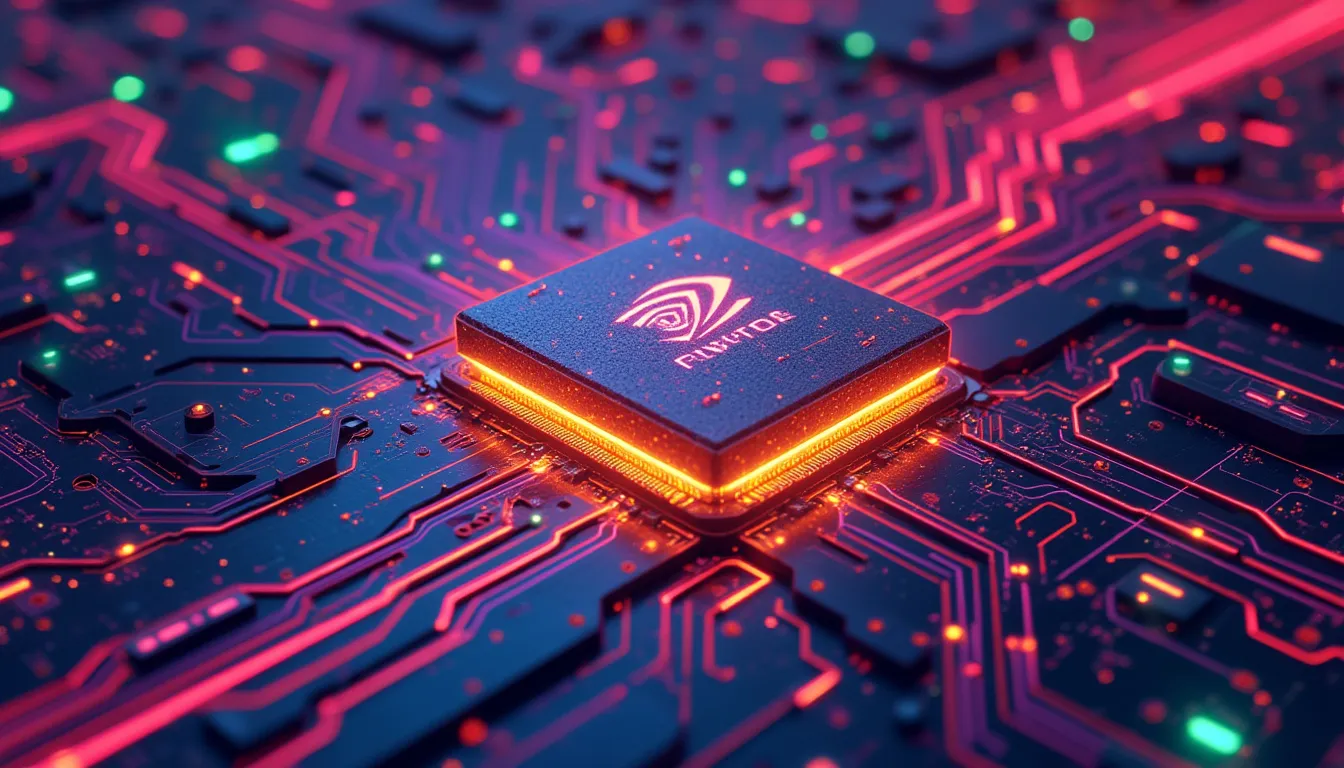AI’s Golden Chip: How Nvidia’s Trillion-Dollar Surge is Reshaping Tech’s Future
Imagine a world where the most valuable company isn’t the one that put computers in our pockets, but the one powering the artificial brains behind them. That’s exactly what happened on October 26, 2024, when Nvidia, the chip giant, briefly dethroned Apple as the world’s most valuable company. With a market cap of $3.53 trillion, Nvidia edged past Apple’s $3.52 trillion, marking a seismic shift in the tech landscape that even the most bullish AI advocates couldn’t have predicted a few years ago.
This isn’t just a story of numbers on a stock ticker; it’s a tale of how the invisible architecture of our digital future is being forged in the silicon foundries of Nvidia. The company’s stock has skyrocketed by 190% over the past year, with an 18% climb in October alone. It’s as if Nvidia found the proverbial goose that lays golden eggs, except these eggs are powering everything from chatbots to autonomous vehicles.
The AI Gold Rush: Nvidia’s Chip Bonanza
At the heart of Nvidia’s meteoric rise is an insatiable hunger for AI chips. These aren’t your grandfather’s semiconductors; they’re the turbocharged engines driving the AI revolution. OpenAI’s recent $6.6 billion funding round isn’t just a vote of confidence in AI’s future; it’s a clarion call for more computing power. And Nvidia is answering that call with gusto.
The numbers are staggering. Nvidia is projecting an 82% year-over-year revenue growth, dwarfing Apple’s expected 5.55% growth. It’s like comparing a rocket ship to a bicycle. The company’s data center segment, which accounts for 87% of its total revenue, saw a mind-boggling 154% increase from the previous year, raking in $26.3 billion. As Dr. Lisa Su, CEO of AMD, Nvidia’s competitor, puts it, The AI boom is not just a trend; it’s a fundamental shift in computing paradigms. We’re all racing to keep up with the demand.
Blackwell: The Next Chapter in AI Computing
But Nvidia isn’t resting on its laurels. The company is gearing up to ship its next-generation AI GPUs based on the Blackwell architecture. CEO Jensen Huang describes the demand as insane, and he’s not exaggerating. Industry analysts predict Nvidia could ship up to 200,000 GB200 units in Q4 2024 and a staggering 550,000 units in Q1 2025. That’s not just a product launch; it’s a technological tsunami that could generate $30 billion in data center revenue over two quarters.
The ripple effects of this AI chip dominance are far-reaching. Wall Street is projecting Nvidia’s total revenue for fiscal 2025 to hit $125.6 billion, a 125% increase from the previous year. For context, that’s like a company growing from the size of a small nation’s GDP to a mid-sized one in just 12 months. But here’s where it gets really interesting: despite a current P/E ratio of 63.1, nearly double the Nasdaq-100 technology index, Nvidia’s forward P/E ratio for fiscal 2026 is expected to be 34.3. In layman’s terms? This rocket ship still has plenty of fuel.
As we stand on the precipice of this AI-driven future, one question looms large: Are we witnessing the birth of a new tech monopoly, or is this the beginning of a more diverse, AI-powered ecosystem? Only time will tell, but one thing is certain: Nvidia’s chip supremacy is reshaping not just the tech sector, but the very fabric of our digital existence.
Want to stay ahead of the AI curve and get insights that could shape your financial future? Subscribe to our newsletter for weekly deep dives into the world of tech and AI. And we’re curious: How do you think Nvidia’s dominance will affect everyday technology in the next five years? Share your thoughts in the comments below!










